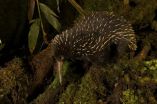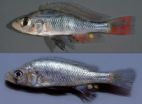(Press-News.org) Magnets have practically become everyday objects. Earlier on, however, the universe consisted only of nonmagnetic elements and particles. Just how the magnetic forces came into existence has been researched by Prof. Dr. Reinhard Schlickeiser at the Institute of Theoretical Physics of the Ruhr-Universität Bochum. In the journal Physical Review Letters, he describes a new mechanism for the magnetisation of the universe even before the emergence of the first stars.
No permanent magnets in the early universe
Before the formation of the first stars, the luminous matter consisted only of a fully ionised gas of protons, electrons, helium nuclei and lithium nuclei which were produced during the Big Bang. "All higher metals, for example, magnetic iron could, according to today's conception, only be formed in the inside of stars", says Reinhard Schlickeiser. "In early times therefore, there were no permanent magnets in the Universe." The parameters that describe the state of a gas are, however, not constant. Density and pressure, as well as electric and magnetic fields fluctuate around certain mean values. As a result of this fluctuation, at certain points in the plasma weak magnetic fields formed - so-called random fields. How strong these fields are in a fully ionised plasma of protons and electrons, has now been calculated by Prof. Schlickeiser, specifically for the gas densities and temperatures that occurred in the plasmas of the early universe.
Weak magnetic fields with large volumes
The result: the magnetic fields fluctuate depending on their position in the plasma, however, regardless of time - unlike, for example, electromagnetic waves such as light waves, which fluctuate over time. Everywhere in the luminous gas of the early universe there was a magnetic field with a strength of 10^-20 Tesla, i.e. 10 sextillionth of a Tesla. By comparison, the earth's magnetic field has a strength of 30 millionths of a Tesla. In MRI scanners, field strengths of three Tesla are now usual. The magnetic field in the plasma of the early universe was thus very weak, but it covered almost 100 percent of the plasma volume.
Interaction of thermal shock waves and magnetic fields
Stellar winds or supernova explosions of the first massive stars generated shock waves that compressed the magnetic random fields in certain areas. In this way, the fields were strengthened and aligned on a wide-scale. Ultimately, the magnetic force was so strong that it in turn influenced the shock waves. "This explains the balance often observed between magnetic forces and thermal gas pressure in cosmic objects", says Prof. Schlickeiser. The calculations show that all fully ionised gases in the early universe were weakly magnetised. Magnetic fields therefore existed even before the first stars. Next, the Bochum physicist is set to examine how the weak magnetic fields affect temperature fluctuations in the cosmic background radiation.
###
Bibliographic record
R. Schlickeiser (2012): Cosmic magnetization: from spontaneously emitted aperiodic turbulent to ordered equipartition fields, Physical Review Letters, DOI: 10.1103/PhysRevLett.109.261101
Futher information
Prof. Dr. Reinhard Schlickeiser
Institute for Theoretical Physics at the Ruhr-Universität
44780 Bochum, Germany
Editor: Dr. Julia Weiler END
Elementary school students often learn that plants grow toward the light. This seems straightforward, but in reality, the genes and pathways that allow plants to grow and move in response to their environment are not fully understood. Leading plant scientists explore one of the most fundamental processes in plant biology—plant movement in response to light, water, and gravity—in a January Special Issue of the American Journal of Botany.
Plant movements, known as tropisms, are crucial for plant survival from the second a plant germinates to how a plant positions its flowers ...
The western long-beaked echidna, one of the world's five egg-laying species of mammal, became extinct in Australia thousands of years ago…or did it? Smithsonian scientists and colleagues have found evidence suggesting that not only did these animals survive in Australia far longer than previously thought, but that they may very well still exist in parts of the country today. The team's findings are published in the Dec. 28, 2012 issue of the journal ZooKeys.
With a small and declining population confined to the Indonesian portion of the island of New Guinea, the western ...
Two new species of cichlid fish from Lake Victoria are described by biologists from Naturalis Biodiversity Center (Research Department Marine Zoology) and the Institute of Biology Leiden (Section Integrative Zoology), the Netherlands. One of these species is named in honour of Tijs Goldschmidt, author of Darwin's Dreampond. This book, published in nine languages, describes the dramatic extinction of hundreds of cichlid species in Lake Victoria in the 1980s due to the introduced Nile perch and other human induced environmental changes.
In 1985, Leiden biologists made a ...
Advances in bio-technologies and computer software have helped make genome sequencing much more common than in the past. But still in question are both the accuracy of different sequencing methods and the best ways to evaluate these efforts. Now, computer scientists have devised a tool to better measure the validity of genome sequencing.
The method, which is described in the journal PLOS ONE, allows for the evaluation of a wide range of genome sequencing procedures by tracking a small group of key statistical features in the basic structure of the assembled genome. Such ...
ANN ARBOR—Researchers used electricity on certain regions in the brain of a patient with chronic, severe facial pain to release an opiate-like substance that's considered one of the body's most powerful painkillers.
The findings expand on previous work done at the University of Michigan, Harvard University and the City University of New York where researchers delivered electricity through sensors on the skulls of chronic migraine patients, and found a decrease in the intensity and pain of their headache attacks. However, the researchers then couldn't completely explain ...
Many scenarios in business and communication require that two parties share information without either being sure if they can trust the other. Examples include secure auctions and identification at ATM machines. Exploiting the strange properties of the quantum world could be the answer to dealing with such distrust: researchers at the Centre for Quantum Technologies (CQT) at the National University of Singapore have used the quantum properties of light to perform the world's first demonstration of a 'secure bit commitment' technology. The work is described in Nature Communications.
Secure ...
DARIEN, IL – A new study suggests that treatment of mild sleep-disordered breathing with continuous positive airway pressure (CPAP) therapy in pregnant women with preeclampsia improves fetal activity levels, a marker of fetal well-being.
Results show that the average number of fetal movements increased from 319 during a night without CPAP treatment to 592 during the subsequent night with CPAP therapy. During the course of the night without CPAP treatment, the number of fetal movements decreased steadily by 7.4 movements per hour. In contrast, the number of fetal movements ...
A team of international archaeologists including Christian Cloke of the University of Cincinnati is providing new insights into successful and extensive water management and agricultural production in and around the ancient desert city of Petra, located in present-day Jordan. Ongoing investigations, of which Cloke is a part, are led by Professor Susan Alcock of the Brown University Petra Archaeological Project (BUPAP).
Using a variety of tools and techniques, including high-resolution satellite imagery and optically stimulated luminescence (OSL) dating of soils, Cloke, ...
By comparing reconstructions of atmospheric CO2 concentrations and sea level over the past 40 million years, researchers based at the National Oceanography Centre, Southampton have found that greenhouse gas concentrations similar to the present (almost 400 parts per million) were systematically associated with sea levels at least nine metres above current levels.
The study determined the 'natural equilibrium' sea level for CO2 concentrations ranging between ice-age values of 180 parts per million and ice-free values of more than 1,000 parts per million.
It takes many ...
As Twelfth Night approaches and the Christmas decorations start to look increasingly congruous as the last crumbs of cake are swept away and the remnants of the turkey have finally been consumed, there is the perennial question as to what to do with the tree. Research published in the International Journal of Biomedical Nanoscience and Nanotechnology suggests that the needles of the plant Pseudotsuga menziesii, commonly known as the Douglas fir could be used to sterilize nano devices destined for medical applications.
Chemist Poushpi Dwivedi of MNNIT in Allahabad, India, ...



